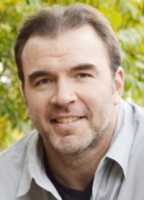20 Nov Breast Cancer Cells Become Chemotherapy Resistant By Eating Surrounding Stem Cells
MedicalResearch.com Interview with:
Thomas Bartosh Jr, Ph.D.
Assistant Professor Medical Physiology
Texas A&M Health Science Center
MedicalResearch.com: What is the background for this study? What are the main findings?
Response: One mysterious and devastating aspect of breast cancer is that it can reemerge abruptly, often as metastatic disease, in patients many years after an apparent eradication of the primary tumor. The sudden reappearance of cancer has been termed relapse and is thought to occur because a minimal number of resilient tumor cells are able to evade frontline therapies and linger in an undetectable/dormant state somewhere in the body for an unpredictable amount of time. Then, for reasons that remain unclear, these same dormant cells awaken and rapidly grow, and produce almost invariably fatal cancerous lesions. The therapeutic challenges of tumor dormancy and need to decode the underlying mechanisms involved are apparent.
Cancer cell behavior is strongly influenced by various non-malignant cell types that are found within the tumor mass itself and that help make up the tumor microenvironment (TME). In particular, bone marrow-derived mesenchymal stem/stromal cells (MSCs), which are actively recruited into the tumor stroma, directly interact with carcinoma cells and significantly impact cancer progression, although the role of MSCs in tumor dormancy remains ill-defined.
Through recent experimentation, we discovered that MSCs are readily engulfed or cannibalized by breast cancer cells (BCCs) under duress in developing tumors. After cannibalizing MSCs, the BCCs entered dormancy and became highly resistant to stresses imposed by nutrient deprivation and chemotherapy. Of particular interest, the cannibalistic BCCs acquired a unique phenotype rich in factors that demarcate the inflammatory secretome of senescent cells, referred to as the senescence-associated secretory phenotype or SASP. These findings therefore suggest that dormant tumor cells do not sleep as previously thought, but instead actively communicate with the surrounding tissue and perhaps create a personalized niche for protection.
MedicalResearch.com: What should readers take away from your report?
Response: Tumor dormancy, although a clinical asymptomatic period, appears to be a metabolically dynamic phenomenon that is constantly evolving and, in many ways, impersonates the progressive metabolic changes associated with cellular senescence. The SASP in particular could provide cannibalistic dormant cells with the molecular tools needed to create a microenvironment that promotes survival and eventually tumor growth.
MedicalResearch.com: What recommendations do you have for future research as a result of this study?
Response: Looking ahead, our goal is to determine if this intriguing cancer-cell feeding behavior, referred to here as cancer-cell cannibalism, or the associated inflammatory phenotype modulates immune response and can be manipulated or targeted for treatment, or employed as a prognostic tool. A better understanding of the molecular mechanisms driving cancer-cell cannibalism will be important to develop novel treatments that prevent cancer recurrence.
MedicalResearch.com: Is there anything else you would like to add?
Response: It is still unclear if our findings are context-dependent or if other processes that promote tumor dormancy also produce metabolically active yet growth-arrested cancer cells.
This work was funded in part by the Cancer Prevention and Research Institute of Texas and by the National Institutes of Health.
MedicalResearch.com: Thank you for your contribution to the MedicalResearch.com community.
Citation:
Thomas J. Bartosh, Mujib Ullah, Suzanne Zeitouni, Joshua Beaver, Darwin J. Prockop. Cancer cells enter dormancy after cannibalizing mesenchymal stem/stromal cells (MSCs). Proceedings of the National Academy of Sciences, 2016; 113 (42): E6447
Note: Content is Not intended as medical advice. Please consult your health care provider regarding your specific medical condition and questions.
More Medical Research Interviews on MedicalResearch.com
[wysija_form id=”5″]
Last Updated on November 20, 2016 by Marie Benz MD FAAD

